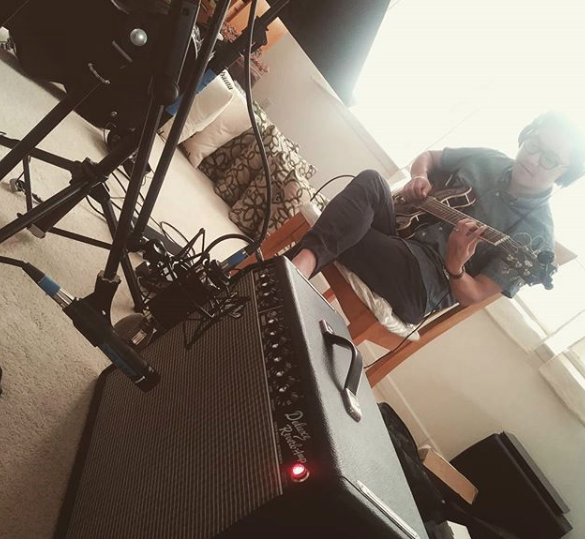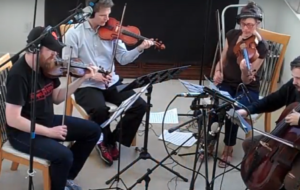When it came to recording the latest 510JAZZ album January 16, we incorporated many new musicians that played instruments which I have never recorded before. Not only was this diversity of instruments refreshing and key to forming our new album’s sound, it also required a new recording skillset to ensure optimal sound.
Depending on what song we’d be recording for a given session, as the engineer, I would do my best to prepare a couple of weeks beforehand. This usually involved researching best-practices for recording a certain instrument, what types of microphones would work best on that particular instrument, and rooms that would offer the best acoustic characteristics.
For January 16, I decided to purchase a stereo pair of Cascade Fathead II ribbon microphones. Prior to this purchase, I only owned condenser and dynamic style microphones. Going into recording the album, I knew that at some point that we’d be recording an electric guitar. Two microphones strategically placed on a guitar amp can achieve great results, especially with a ribbon microphone. That’s exactly what I did. I learned about microphone placement techniques from watching audio guru Bobby Owsinski’s Audio Recording Techniques video series on Lynda.com. The end result was that I was able to get a great electric guitar tone from combining a Shure SM57 and the Cascade Fathead II. Our songs Stormy Weather and The Long Way Home are examples of songs found on January 16 that include electric guitar.

On four of our other songs: You’re Everything to Me, The Moon and You, San Juan Island Sunset, and Serendipity, my father John Vargas wanted to include a string quartet. I knew once we set the date for the string quartet’s recording session, I needed prepare by gathering as much information as possible. I turned to YouTube to try to soak up information that would lead me in the right direction. I stumbled across this Audio Technica video that was very useful. Bobby Owsinski’s Audio Recording Techniques was also extremely helpful as it contained a segment on recording strings.
Since I am a Music Technology student at Foothill College, I was able get advice from my instructor Eric Kuehnl regarding this matter. He gave me great advice on placement, how the microphones should be positioned above the musicians, and he suggested recording the string quartet in a room with a higher ceiling. Eric also recommended having room microphones set in an X-Y configuration to capture additional content. Professor Kuehnl’s expertise and advice really paid off, as we captured a great sound.

The main takeaways from this blog post is that great information regarding music recording can be easily accessed online. This information is geared to help anyone to prepare for an upcoming recording session. You’ll get out of your recording session exactly what you put into it – when you take the time to research. So please, if you care for your sound, do your due diligence.
Until next time, happy recording!
Listen to January 16 now, available for purchase on iTunes, Amazon, Google Play, & Spotify.
God Bless
David “D-Varg” Vargas
Audio Engineer for 510JAZZ
